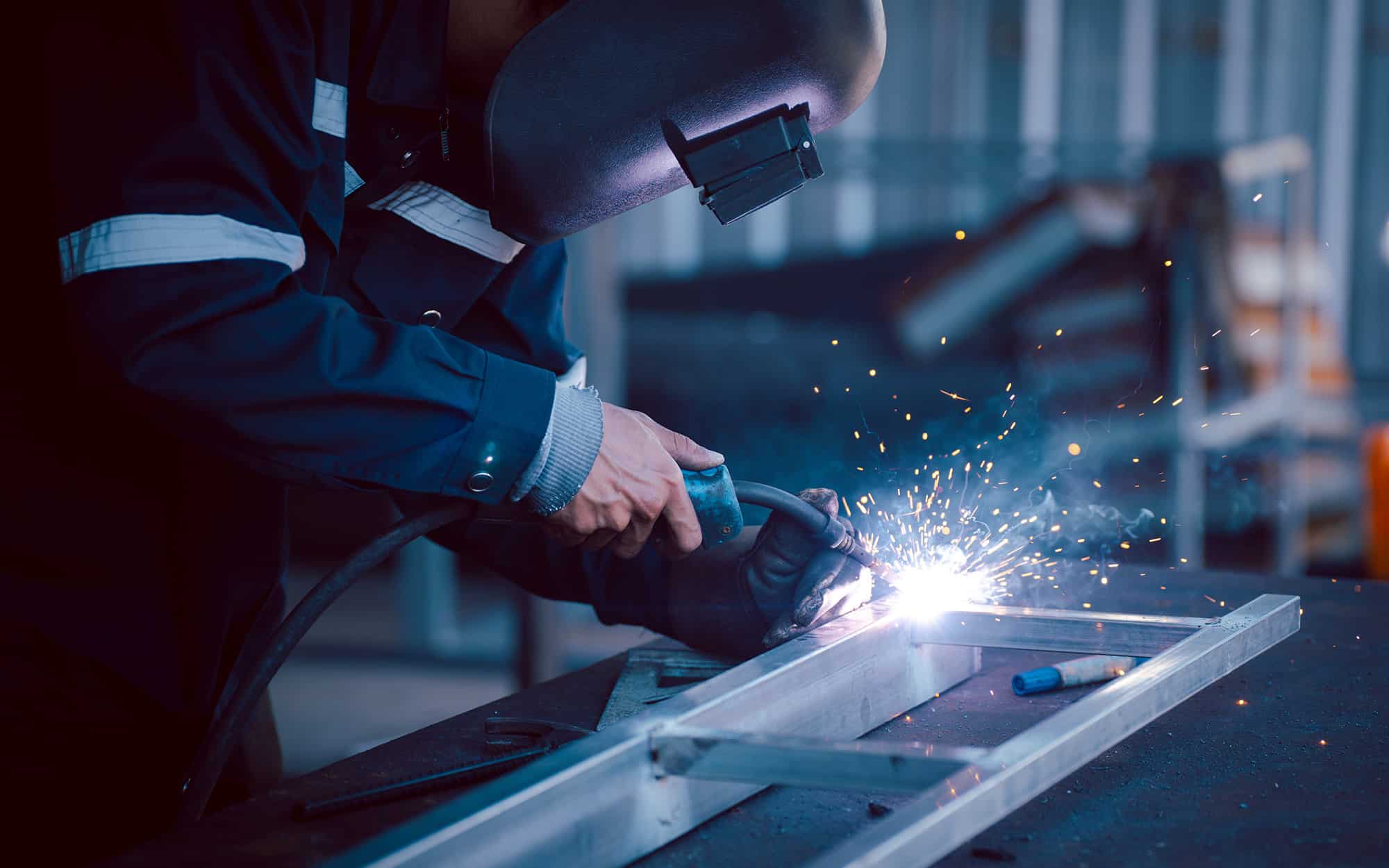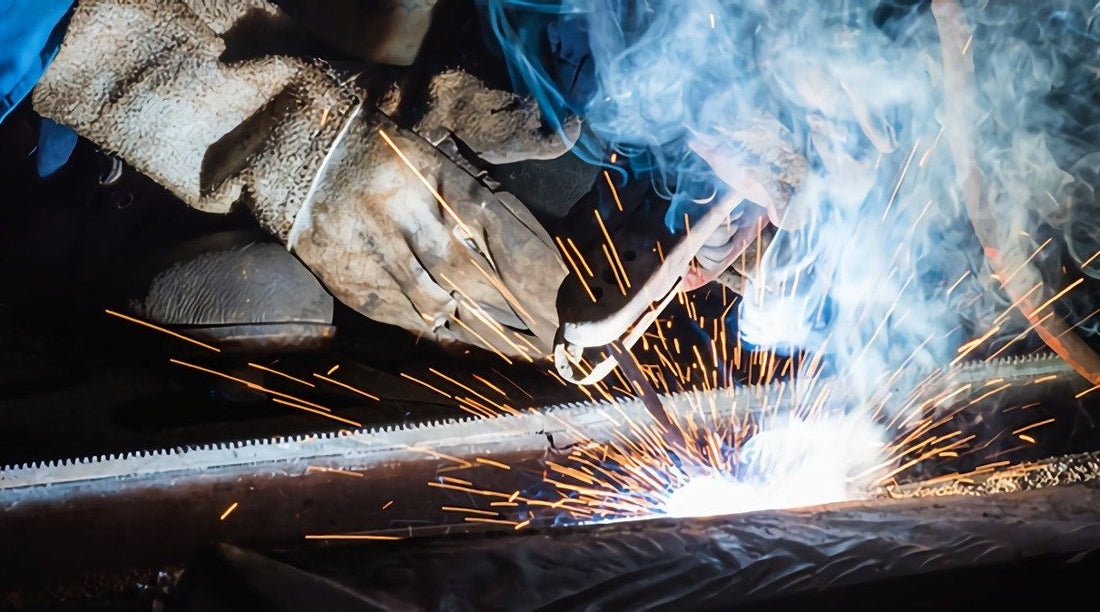All Concerning Welding: Secret Insights Into Techniques and Ideal Practices for Success
Welding incorporates a range of strategies, each suited for certain products and applications. Recognizing these techniques, such as GMAW, SMAW, and TIG, is crucial for accomplishing optimal results. In addition, the ideal devices and safety practices can not be forgotten. As prep work and troubleshooting play essential functions in the welding process, understanding these components can substantially boost the top quality of the end product. What are the key aspects that ensure an effective weld?
Recognizing Various Welding Techniques
Welding strategies encompass a variety of methods, each suited to particular applications and products. Amongst the most usual techniques are Gas Metal Arc Welding (GMAW), Protected Steel Arc Welding (SMAW), and Tungsten Inert Gas Welding (TIG) GMAW, additionally understood as MIG welding, is popular for its speed and adaptability, making it suitable for slim products. SMAW, or stick welding, is preferred for its simpleness and efficiency in exterior atmospheres, particularly with thicker metals. TIG welding offers precision and control, making it suitable for intricate job and non-ferrous metals (Welding). Each technique has its unique benefits and factors to consider, allowing welders to select the very best approach based on the project's demands, product kind, and desired outcomes. Comprehending these strategies is important for effective welding
Essential Welding Equipment and Tools
While various welding methods call for certain abilities, the right tools and tools are just as important for accomplishing quality outcomes. Vital welding tools includes welding equipments, which vary relying on the strategy-- such as MIG, TIG, or stick welding. Safety gear, including handwear covers, safety helmets, and aprons, assurances security and convenience during the procedure. Furthermore, clamps and components aid protect products in position, making certain precision in welds. Consumables like welding rods, cable, and protecting gas are likewise essential elements that influence the quality of the weld. Moreover, devices such as cutters and mills assist in surface area preparation and post-weld finishing, adding to an expert result. Spending in high-grade tools eventually improves the effectiveness and efficiency of welding jobs.
Security Practices in Welding
Correct safety and security methods are vital in the welding industry to protect employees from prospective dangers. Welders need to use proper individual safety devices (PPE), consisting of safety helmets with proper shading, handwear covers, and flame-resistant garments. Sufficient ventilation is vital to lower direct exposure to unsafe fumes and gases produced during the welding procedure. Additionally, employees ought to be learnt the correct handling of welding equipment to stop mishaps. Fire precaution, such as maintaining flammable materials far from the welding area and having fire extinguishers easily offered, are needed. Normal assessments of tools and offices can aid recognize prospective hazards before they lead to crashes. By sticking to these safety practices, welders can produce a more secure working atmosphere and decrease threats connected with their profession.
Preparing Products for Welding
Preparing materials for welding is a crucial action that considerably influences the top quality and integrity of the end product (Fabrication). Appropriate prep work involves cleaning up the surfaces to eliminate contaminants such as oil, rust, and dirt, which can compromise the weld. Methods such as grinding, fining sand, or using solvents are frequently utilized to accomplish a clean surface. Furthermore, making sure that the materials mesh well is necessary; spaces can result in weak welds. It's additionally vital to consider the alignment and positioning of the parts, as this will certainly influence the simplicity of welding and the final outcome. Lastly, choosing the proper filler material and making certain compatibility with the base steels is necessary for attaining solid, sturdy welds
Tips for Achieving High-Quality Welds
Achieving premium welds requires interest to information and adherence to ideal methods throughout the welding procedure. Correct joint preparation is vital, making certain surface areas are clean and cost-free from contaminants. Selecting the suitable filler material and welding strategy based upon the base steels is important for excellent bonding. Maintaining regular traveling rate and angle while welding can promote and stop defects harmony. Furthermore, managing warm input is vital; excessive warm can result in warping and damaged joints. If needed, regularly inspecting the welds throughout the procedure allows for immediate adjustments. Finally, utilizing ideal post-weld treatments, such as cleansing and stress relief, can boost the durability and honesty of the weld, eventually making certain an effective result.
Fixing Typical Welding Issues
Welding often offers difficulties that can impact the top quality and integrity of the final item. Usual issues such as porosity, irregular weld grains, and overheating can develop, each needing certain repairing methods. Understanding these troubles is essential for welders to enhance their skills and achieve optimal results.
Porosity Issues Clarified
Although porosity can usually be forgotten, it stays an essential concern in welding that can jeopardize the stability of a finished product. Porosity refers to the existence of small gas pockets within the weld grain, which can compromise the joint and lead to premature failure. This trouble typically arises from pollutants, dampness, or inappropriate securing gas insurance coverage during the welding procedure. To reduce porosity, welders should confirm that the base materials are tidy and dry, use proper protecting gases, and preserve consistent welding specifications. Routinely inspecting the tools and setting can also help identify possible problems before they manifest in the weld. Attending to porosity efficiently is important for achieving strong, resilient welds that fulfill top quality requirements.

Irregular Weld Beads
Irregular weld beads can significantly affect the quality and strength of a finished product. Numerous elements add to this problem, including improper traveling rate, inaccurate amperage setups, and inconsistent electrode angles. When the welder relocates as well rapidly, a grain might appear narrow and lack penetration, while moving as well slowly can create too much build-up. In addition, utilizing the wrong amperage can lead to either damaging or excessive spatter, both of which compromise weld honesty. welders near me The welder's strategy, such as irregular lantern activity, can also lead to unequal bead appearance. To mitigate these troubles, welders ought to focus on keeping consistent, controlled activities and guaranteeing correct equipment settings to achieve uniformity in their welds. Uniformity is vital to accomplishing solid and trustworthy welds.
Getting Too Hot and Bending Issues
Too much heat during the welding process can lead to significant getting too hot and contorting problems, affecting the structural honesty of the workpiece. These issues usually materialize as distortion, which can jeopardize alignment and fit-up, making additional setting up testing. Aspects adding to overheating consist of the choice of welding criteria, such as voltage and take a trip speed, in addition to the sort of material being welded. To minimize these issues, welders should preserve constant travel rate and suitable warmth input while keeping an eye on the work surface temperature level. Furthermore, preheating or post-weld warm treatment can aid minimize stresses caused by rapid air conditioning - Fabrication. Regular examination and adherence to best techniques are vital in avoiding overheating and ensuring the longevity and reliability of welded structures
Often Asked Inquiries
What Are the Career Opportunities in the Welding Sector?
The welding sector offers varied occupation possibilities, consisting of positions as welders, educators, engineers, and assessors. Experts can function in manufacturing, construction, aerospace, and automotive industries, benefiting from strong demand and competitive salaries in different roles.
Just How Can I Improve My Welding Rate Without Compromising Top Quality?
To improve welding speed without giving up quality, one should practice reliable strategies, keep devices, maximize settings, and enhance hand-eye sychronisation. Normal training and looking for responses can likewise greatly add to achieving much faster, top quality welds.
What Accreditations Are Readily Available for Welders?
Various qualifications exist pulse mig welder for welders, consisting of those from the American Welding Society (AWS), the National Facility for Building Education And Learning and Research (NCCER), and different industry-specific organizations. These qualifications boost employability and show ability proficiency.
Just How Does Welding Influence the Features of Metals?
Welding influences the homes of metals by modifying their microstructure, which can bring about changes in toughness, ductility, and solidity. Heat input and cooling rates throughout Continue the process greatly influence these material features.
Can I Weld Dissimilar Metals With Each Other?
